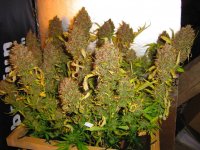Well seems as though you guys have all the answers without my contribution. Pretty much done with dropping any knowledge I have learned over the years....you guys got it all figured out...Enjoy. I will be just over here pulling some old fans and smoking down....keep what I have learned to myself.
I am outta here. Peace, negative.
I am outta here. Peace, negative.



 Well done!
Well done! 
